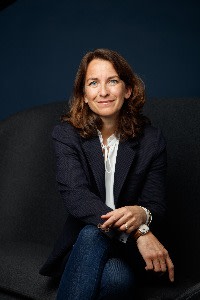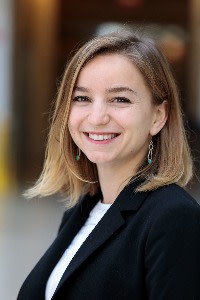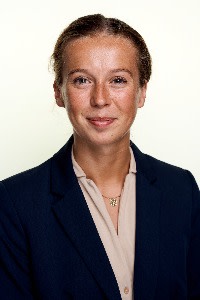Business schools make progress on gender balance

Roula Khalaf, Editor of the FT, selects her favourite stories in this weekly newsletter.
More women are taking a masters in finance degree.
The number of women studying for the specialist postgraduate qualifications has been rising by double digits since the start of the Covid pandemic in 2020, which academics and accreditation bodies say has been propelled by curricular changes and schools appointing more female faculty.
According to the AACSB (Association to Advance Collegiate Schools of Business), the global business school accreditation body, female enrolments on finance masters degrees for the 2021/22 academic year jumped 41 per cent year on year in the US, and 70 per cent year on year for the rest of the world. Across 278 accredited schools, 41.6 per cent of the masters in finance class intakes were women, and female enrolment was up 62 per cent on the 2017/18 intake, compared with an overall increase in enrolment of 33 per cent.
While female domestic US students tend to favour broader postgraduate management courses, masters in finance (MiF) degrees are popular with Asian students, attracted by the prospect of being able to work in the country after they have completed their studies.
FT Masters in Finance ranking 2023

Find out which schools are in our ranking of the top 55 pre-experience postgraduate finance degrees. Also, learn how the table was compiled and read the rest of our coverage.
“It is a great entry point for them to get into the country,” says Elissa Sangster, chief executive of the Forté Foundation, a US-based not-for-profit body that works to encourage women to build careers through business education.
“It also gives you a leg up in the recruitment process if you have that specialisation, better than an MBA,” Sangster adds, noting that a qualification focused on finance can be more help in advancing a career in financial services.
A principal reason cited for the higher intake of female students has been schools increasing the number of female teaching staff. This has been driven from the top at some schools, such as France’s Neoma Business School, whose dean Delphine Manceau has championed gender balance.
The percentage of female faculty at the school has risen from 40 to 48 per cent since she took office in October 2017, and Manceau has appointed women to lead Neoma’s masters in finance and masters in management degree programmes.

Seeing women in leadership roles at schools encourages female students to seek similar positions in their own careers, according to Anne-Sophie Courtier, an associate professor of law who teaches on the Neoma MiF programme. “They inspire our students . . . to believe that they can reach high positions,” she says. “We are trying to change the financial services market because that market is still really difficult for women.”
Women in top leadership roles in business remain rare. Just 6 per cent of companies globally have a female chief executive, 15 per cent have a female CFO, and 8 per cent have a female chair of the board, according to gender data provider Equileap.
The improvement in gender balance among students has been helped by curriculum changes for MiF courses aimed at making them more attractive to liberal arts students, a group that has long had higher female representation, according to Geoff Perry, AACSB’s executive vice-president and chief officer for the Asia Pacific region.
“Course organisers have branched out into green finance and responsible finance, which makes the subject more attractive to a broader range of potential students,” Perry says. “It’s not that women are more attracted to this than men, but it has made it attractive to a wider group of people.”

Jessica Jeffers, an associate professor at HEC Paris, points out: “There is of course a representation problem — not only in the students who take and have historically taken these classes, but also in the faculty who teach the classes. Lack of representation makes it hard to project ourselves in a field.”
Beyond the classroom, careers in finance have a reputation for a difficult work-life balance, which can deter women (and increasingly men) who want to ensure they will have time for family alongside work. “This is all a shame, because there are many exciting challenges facing finance in the years ahead, and we need bright people from all backgrounds and genders to help us meet these challenges,” Jeffers says.
MiF courses can be a gateway for women with arts degrees to pivot into banking jobs.
“Very often, the finance proposition for undergraduates closes up after two years because the banks recruit from internships, so a masters in finance becomes one of the only entry points into a job,” Sangster says.
Camille Fossaert switched her career plans to banking after joining the masters in international finance programme at HEC Paris. She had applied to study a masters in data science in France at the École Polytechnique when she discovered that she could combine this with an MiF at HEC Paris. Having declined offers from two other banks, she is soon to start an internship at Goldman Sachs in Paris.

“If someone hadn’t told me about the international finance course, I would never have thought about a career in finance,” Fossaert says, adding that she had previously wanted to start her own business.
She says that many of her colleagues on the course had not previously studied finance but have been attracted to the financial services industry “because of the money they earn”.
At London Business School, the proportion of women taking its masters in financial analysis programme has climbed by a third since the course launched in 2017. Women now make up 41.5 per cent of the intake, even as the class size has almost trebled in the past six years.
Arnold Longboy, executive director of recruitment and admissions at the school, says role models and recommendations are vital to encourage more women to sign up to courses. “Our number one source of candidates is word of mouth marketing [because] our students and alumni go out and talk about their experiences,” he says. “Ultimately, this is a chicken and egg problem.”

Comments